GB 8163 Steel Pipe
Standard steel pipes suitable for various industrial applications.
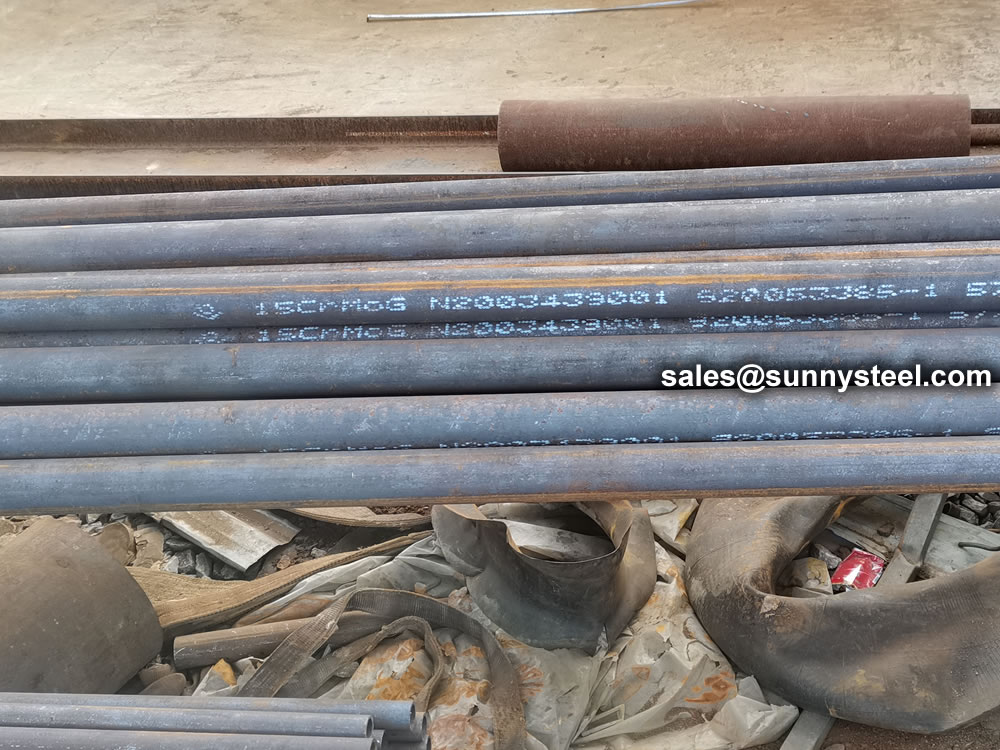
GB 5310 15CrMoG high pressure seamless boiler tubes are designed and manufactured to meet the technical requirements of high-pressure boilers in various industrial settings.
GB 5310 15CrMoG high pressure seamless boiler tubes are a type of seamless steel tubes or pipes designed and manufactured according to the Chinese national standard GB/T 5310.
15CrMoG is a type of pearlitic steel with high creep resistance and excellent mechanical properties at high temperatures. It is commonly used as the material for high-temperature boilers in power plants which require ultra-supercritical steam parameters.
The high-pressure seamless production process ensures the tubes have tight dimensional tolerance and excellent surface finish. The tubes can come in various lengths, outer diameters, wall thicknesses, and end types such as plain end, beveled end, or threaded ends.
GB 5310 15CrMoG high-pressure seamless boiler tubes are widely used in various industrial applications such as power generation, manufacturing, and petrochemicals, among others, as they aim to ensure the safety and reliability of high-pressure boilers by meeting strict standards for the production and use of seamless steel tubes and pipes.
15CrMoG High Pressure Seamless Boiler Tubes is GB 5310-95 steel grade (equivalent to 13CrMo44 of Federal Germany; corresponding to 1Cr-1 / 2Mo and 1 1 / 4cr-1 / 2mo-si steel widely used in various countries in the world)
15CrMoG is GB 5310-95 steel grade (equivalent to 13CrMo44 of Federal Germany; corresponding to 1Cr-1 / 2Mo and 1 1 / 4cr-1 / 2mo-si steel widely used in various countries in the world). Its chromium content is higher than 12CrMo steel, so it has higher thermal strength at 500-550 ℃. When the temperature is higher than 550 ℃, the thermal strength of 15CrMoG steel is significantly reduced. When it runs at 500-550ec for a long time, it does not produce graphitization, but it will produce carbide spheroidization and redistribution of alloy elements, which all lead to the decrease of the thermal strength of steel. 15CrMoG steel has good relaxation resistance at 450 ℃. Its pipe making and welding process performance is good.
Standard: GB 5310
Relative grades: 20G, 20MnG, 15MoG, 15CrMoG, 12Cr2MoG, 12Cr1MoVG. After consultation, can also supply other grades of steel.
15CrMoG Alloy steel pipe is a seamless steel tube, its performance is much higher than the general seamless steel pipe, because the inside of this tube contains CR more, its alloy steel tube high temperature, low-temperature, corrosion resistance of other seamless steel tubes, so the alloy tube in the petroleum, chemical, electric power, boiler and other industries are more widely used.
The chemical composition of 15CrMoG alloy pipe plays a crucial role in its mechanical properties and performance. The presence of 15% chromium and molybdenum imparts excellent high-temperature strength and creep resistance. Additionally, the alloy contains carbon, manganese, silicon, and small amounts of other elements, contributing to its overall properties.
The chemical composition of 15CrMoG alloy steel is as follows:
| Material | C | Mn | Si | Cr | Mo | Ni | Nb+Ta | S | P |
|---|---|---|---|---|---|---|---|---|---|
| 15CrMo | 0.12~0.18 | 0.40~0.70 | 0.17~0.37 | 0.80~1.10 | 0.40~0.55 | ≤0.30 | _ | ≤0.035 | ≤0.035 |
To perform a PMI test on a 15CrMoG alloy pipe, you typically use handheld or portable X-ray fluorescence (XRF) analyzers or optical emission spectrometers.
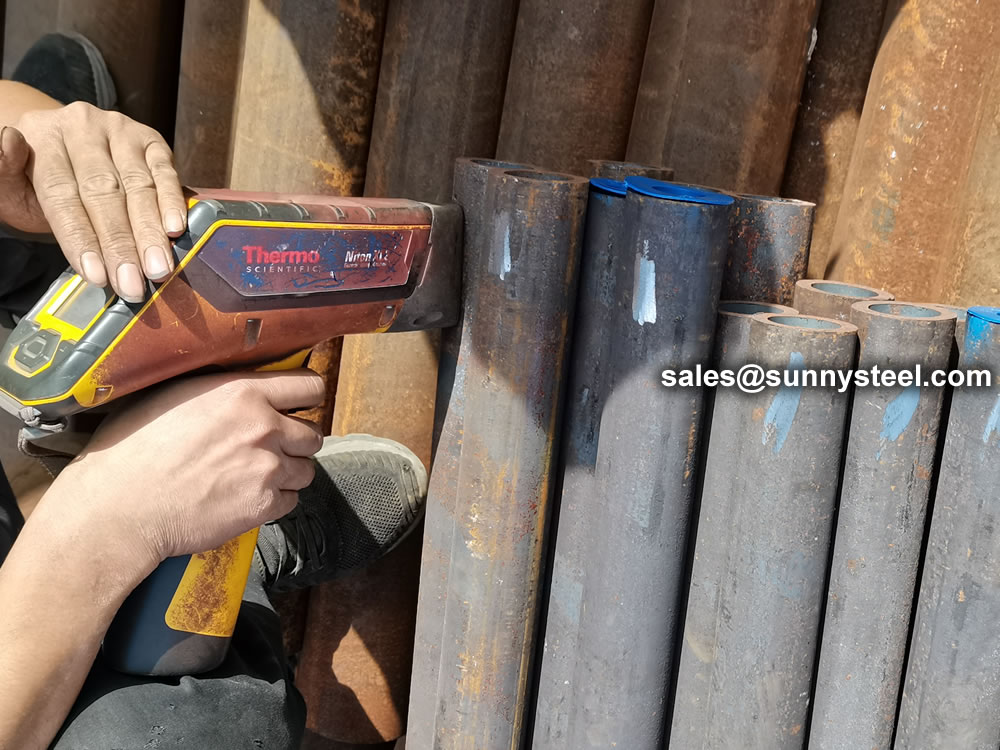
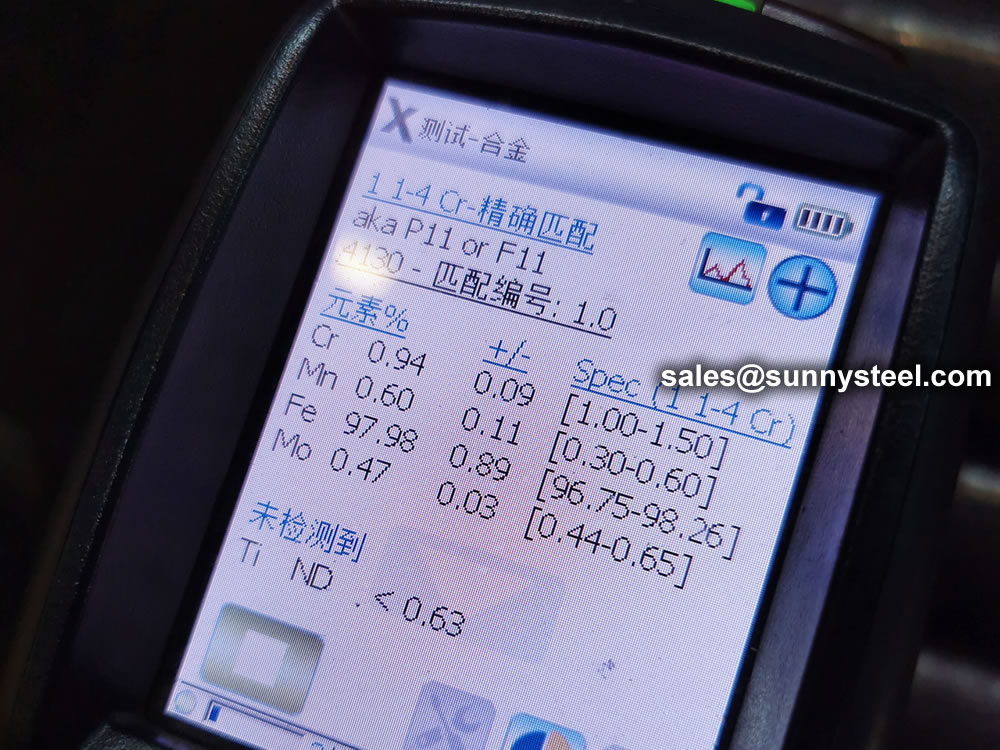
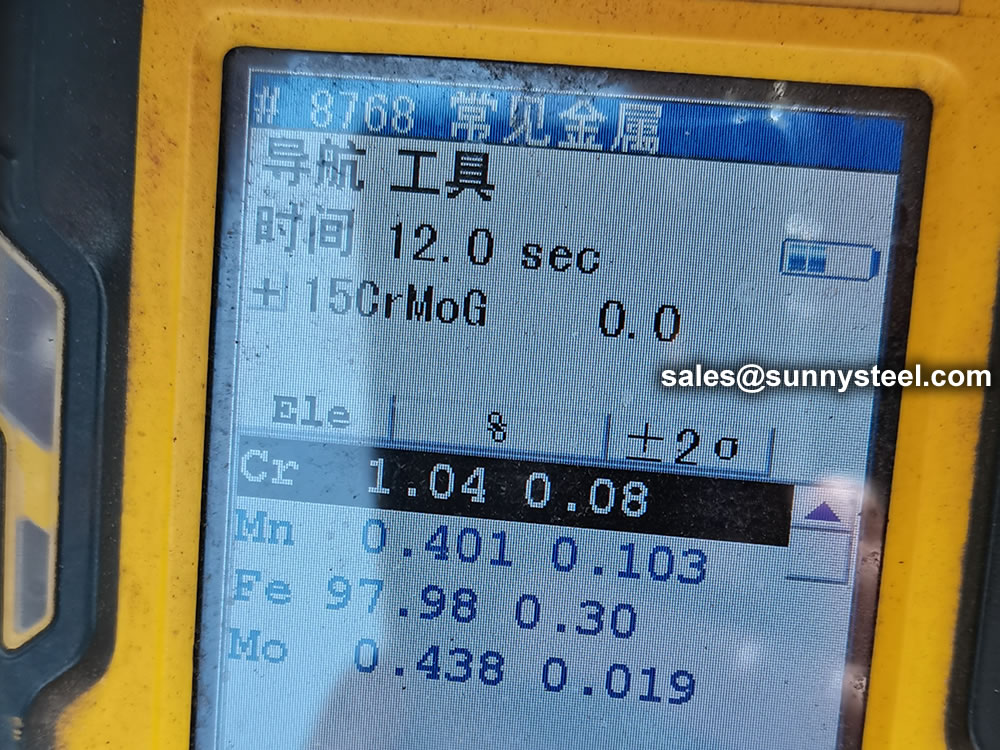
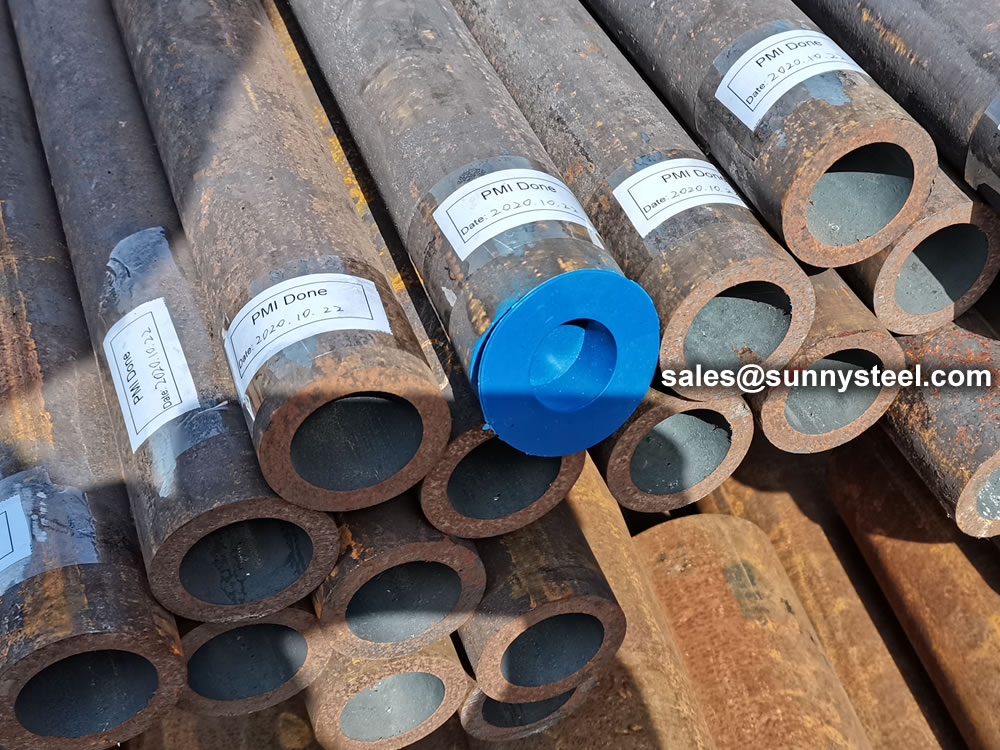
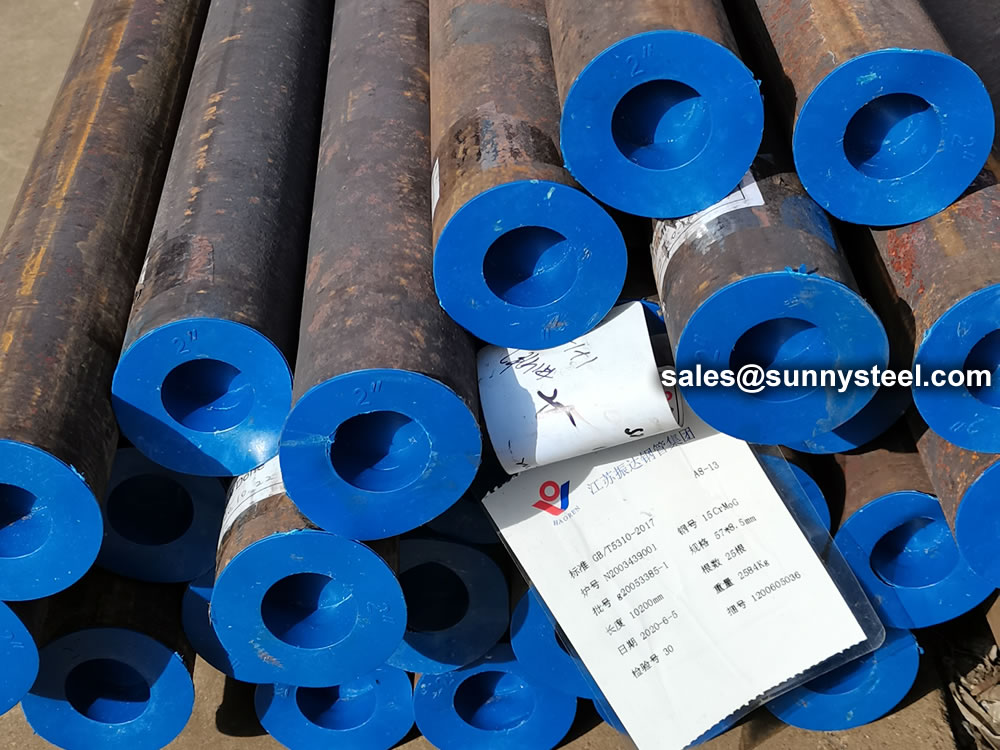
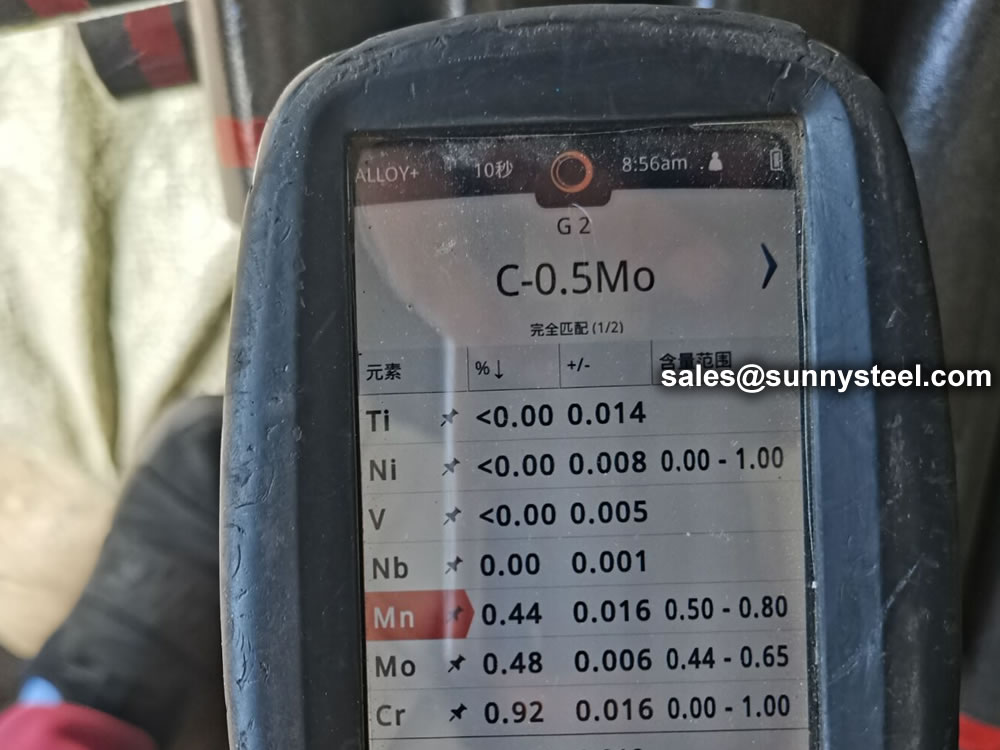
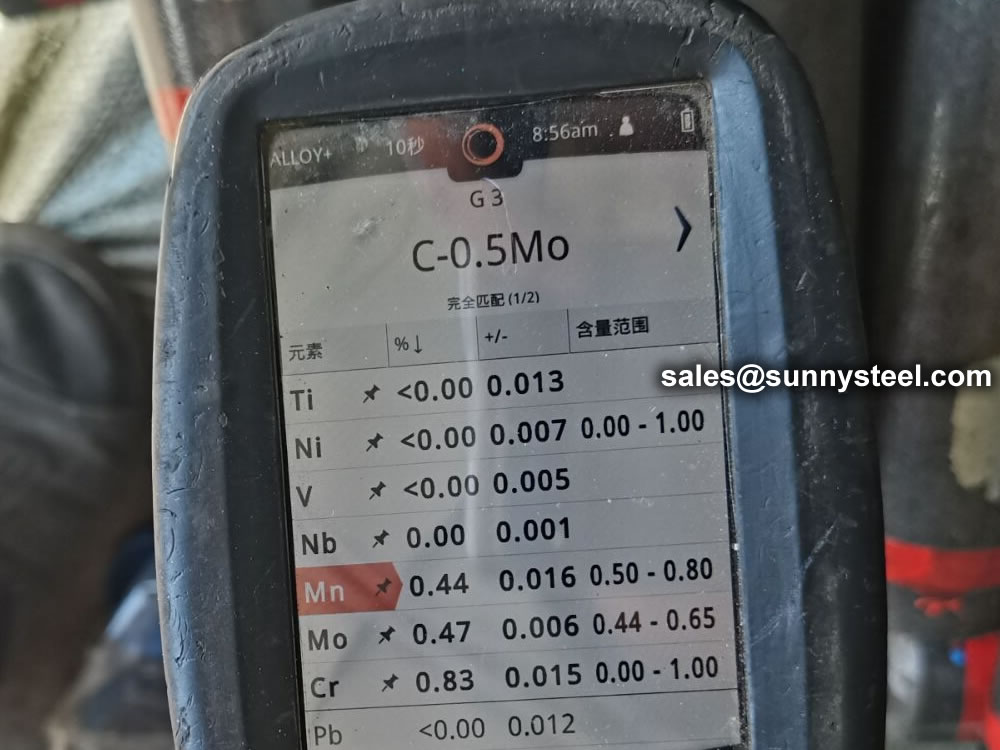
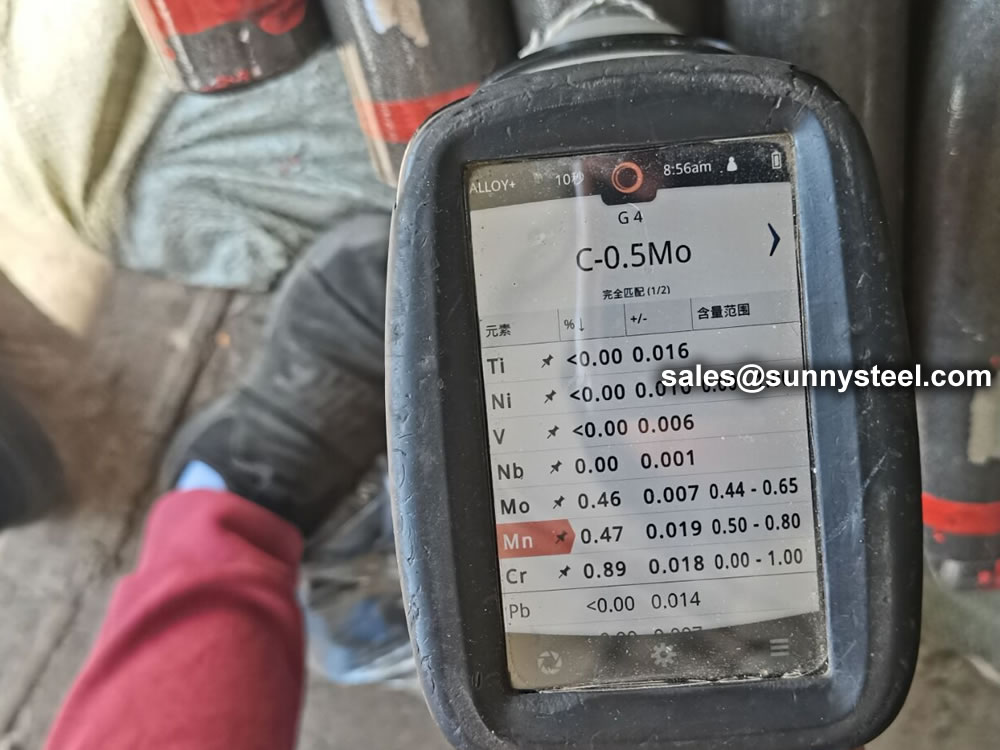
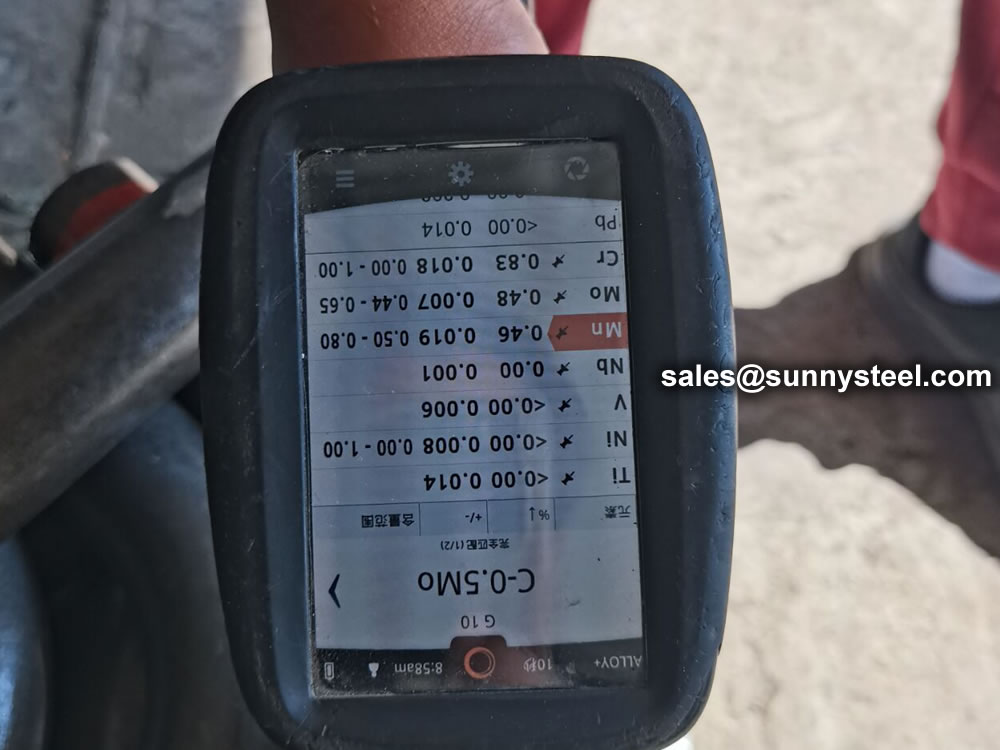
| Material | Yield strength σs/MPa (>=) | Tensile strength σb/MPa (>=) | Elongation δ5/% (>=) |
|---|---|---|---|
| 15CrMo | 440~640 | 235 | 21 |
The mechanical properties of 15CrMoG alloy pipe are impressive, making it suitable for use in extreme conditions. It exhibits high tensile strength, superior toughness, and exceptional resistance to deformation under high pressures and temperatures.
| Country | Standard | Material |
|---|---|---|
| USA | SAE/AISI/UNS | - |
| Germany | DIN,WNr | 15CrMO | 1.7262 |
| China | GB | 15CrMo |
| Japan | JIS | SCM415 |
| France | AFNOR | 15CD4.05 |
| England | BS | 1501-620 | Cr31 |
| Italy | UNI | - |
| Poland | PN | - |
| Czechia | CSN | - |
| Austria | ONORM | - |
| Sweden | SS | - |
| Spain | UNE | - |
Heat treatment is a highly effective means of improving and modifying the properties of 15CrMo alloy round steel. It plays a very important role in product reliability and economy. Heat treatment of 15CrMo alloy round steel usually includes ordinary heat treatment (annealing, normalising, quenching, tempering) and surface heat treatment (surface quenching and chemical heat treatment - carburising, nitriding, metallising, etc.).
In mechanical engineering, many machine parts, such as crankshafts, gears, camshafts of internal combustion engines and gears in important reduction gears, require not only sufficient toughness, plasticity and bending strength in the core, but also a high surface thickness within a certain thickness. hardness, high wear resistance and high fatigue strength. It is difficult to meet the above performance requirements simultaneously with the above various overall heat treatment methods, and the use of surface heat treatment is the most effective method to meet these performance requirements simultaneously.
Surface heat treatment is a heat treatment method that changes the surface properties of 15CrMo alloy round steel by changing the structure of the surface layer.
Surface quenching is a heat treatment that gradually changes the surface structure without changing the chemical composition of the surface. It can be carried out by high-frequency, medium-frequency or power-frequency induction heating method or flame heating method. The common feature is that the surface of 15CrMo alloy round steel is quickly heated to the quenching temperature, and when the heat is not transferred to the core of the part, it is quickly cooled, so that the surface hardness is high, but the core still has high toughness.
Chemical heat treatment is a heat treatment method that changes the chemical composition and structure of the surface layer of 15CrMo alloy round steel. Chemical heat treatment can be divided into methods such as carburizing, nitriding, carbonitriding and metallising according to the different elements infiltrated on the surface of 15CrMo alloy round steel. It is very effective in improving and enhancing the wear resistance, corrosion resistance and fatigue resistance of 15CrMo alloy round steel. At present, chemical heat treatment has developed rapidly, and there are many applications of new technologies.
15CrMoG alloy pipe heat treatment: Normalizing and tempering
| W.T.(S) | Tolerance of W.T. | |
|---|---|---|
| <3.5 | +15%(+0.48mm min) | |
| -10%(+0.32mm min) | ||
| 3.5-20 | +15%,-10% | |
| >20 | D<219 | ±10% |
| D≥219 | +12.5%,-10% | |
The principle of purifying hydrogen from 15CrMoG alloy pipe is that, at 300-500 ℃, hydrogen is adsorbed on the side of the 15CrMoG alloy steel tube, and the hydrogen is absorbed on the 1515CrMoG alloy steel pipe wall, because of the lack of two electrons in the 4d electron layer of palladium, It can produce unstable chemical bonds with hydrogen (this reaction of palladium and hydrogen is reversible), under the action of Palladium, hydrogen is ionized to proton its radius is 1.5x1015m, and the lattice constant of palladium is 3.88x10-10m (20 ℃), so it can pass 15CrMoG alloy steel pipe, Under the action of Palladium, protons are combined with electrons to form hydrogen molecules, escaping from the other side of the 15CrMoG alloy steel tube.
For high-pressure boiler (working pressure 9.8MPa or more generally, the working temperature between 450℃-650℃) of heating surface tubes, header, economizer, superheater, reheater and so on.
Classification, code
a) Hot rolled steel pipe, codenamed WH;
b) Cold drawn steel pipe, codenamed WC.
The steel tubes shall be delivered in a heat treated condition.
Length: 5800mm; 6000mm; 6096mm; 7315mm; 11800mm; 12000mm; and so on.
Max length: 16000mm, also U bending can be offered.
This inventory is part of the inventory, demand and other models in stock or order materials, please contact us.
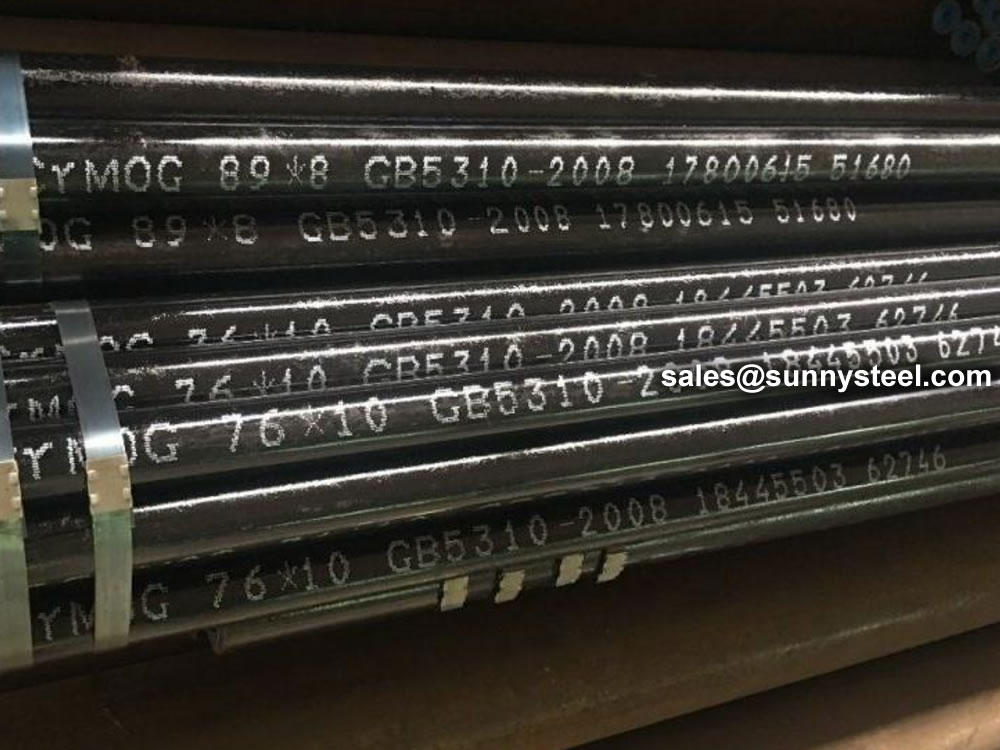
GB 5310 is a standard for seamless tubes used in high-pressure steam boilers and pipelines. The main application for GB 5310 tubes is as high-pressure pipeline tubes in boiler projects. These tubes can be used for superheaters, reheaters, and windpipes.
The GB 5310 standard applies to tubes made from materials such as:
The long-term use temperature for GB 5310 20G seamless steel pipes used as headers and steam pipes is ≤ 425 ° C.
| Steel Grade | C | Si | Mn | S | P | Cr | Mo | V | Ti | B | W | Ni | Al | Nb | N |
|---|---|---|---|---|---|---|---|---|---|---|---|---|---|---|---|
| 20G | 0.17-0.23 | 0.17-0.37 | 0.35-0.65 | 0.015 | 0.025 | ||||||||||
| 20 MnG | 0.17-0.24 | 0.17-0.37 | 0.70-1.00 | 0.015 | 0.025 | ||||||||||
| 25MnG | 0.22-0.27 | 0.17-0.37 | 0.70-1.00 | 0.015 | 0.025 | ||||||||||
| 15MoG | 0.12-0.20 | 0.17-0.37 | 0.40-0.80 | 0.015 | 0.025 | 0.25-0.35 | |||||||||
| 20MnG | 0.15-0.25 | 0.17-0.37 | 0.40-0.80 | 0.015 | 0.025 | 0.44-0.65 | |||||||||
| 12CrMoG | 0.08-0.15 | 0.17-0.37 | 0.40-0.70 | 0.015 | 0.025 | 0.40-0.70 | 0.40-0.55 | ||||||||
| 15CrMoG | 0.12-0.18 | 0.17-0.37 | 0.40-0.70 | 0.015 | 0.025 | 0.80-1.10 | 0.40-0.55 | ||||||||
| 12Cr2MoG | 0.08-0.15 | ≤0.60 | 0.40-0.60 | 0.015 | 0.025 | 2.00-2.50 | 0.90-1.13 | ||||||||
| 12Cr1MoVG | 0.08-0.15 | 0.17-0.37 | 0.40-0.70 | 0.010 | 0.025 | 0.90-1.20 | 0.25-0.35 | 0.15-0.30 | |||||||
| 12Cr2MoWVTiB | 0.08-0.15 | 0.45-0.75 | 0.45-0.65 | 0.015 | 0.025 | 1.60-2.10 | 0.50-0.65 | 0.28-0.42 | 0.08-0.18 | 0.002-0.008 | 0.30-0.55 | ||||
| 10Cr9Mo1VNbN | 0.08-0.12 | 0.20-0.50 | 0.30-0.60 | 0.010 | 0.020 | 8.00-9.50 | 0.85-1.05 | 0.18-0.25 | ≤0.040 | ≤0.040 | 0.06-0.10 | 0.03-0.07 |
Steel smelting method
High-quality carbon structural steel and alloy structural steel shall be smelted by electric furnace plus furnace refining, oxygen converter plus furnace refining or electroslag remelting method, and steel refined outside the furnace shall be subjected to vacuum degassing treatment.
10Cr9Mo1VNbN, 10Cr9MoW2VNbBN, 10Cr11MoW2VNbCu1BN, 11Cr9Mo1W1VNbBN and stainless (heat-resistant) steel should be smelted by electric furnace plus furnace refining or electroslag remelting. The steel refined outside the furnace should be vacuum degassed.
After consultation between the supplier and the buyer, and indicating in the contract, other higher-required smelting methods may be adopted. When the purchaser specifies a certain smelting method, it should be indicated in the contract.
The tube blank can be produced by continuous casting, die casting or hot rolling (forging).
Continuous casting tube blanks shall comply with the provisions of YB/T 4149, in which the level of low-fold structural defects shall not exceed 1; the hot-rolled (forged) tube blanks shall comply with the provisions of YB/T ××××; It is carried out in accordance with the regulations for hot-rolled (forged) tube blanks.
Steel pipes shall be manufactured by hot rolling (extrusion, expansion) or cold drawing (rolling). Steel pipes of grade 08Cr18Ni11NbFG shall be manufactured by cold drawing (rolling) seamless method.
The steel pipe shall be delivered in a heat treated condition. The heat treatment system for steel pipes shall comply with the requirements of Table 4. The heat treatment system for steel pipes should be filled in the quality certificate.
| No. | Steel Pipe | Heat treatment |
|---|---|---|
| 1 | 12Ga、20Ga | 880 ℃~940 ℃,Normalizing |
| 2 | 20MnGa、25MnGa | 880 ℃~940 ℃,Normalizing |
| 3 | 15MoGa、20MoGa | 890 ℃~950 ℃,Normalizing |
| 4 | 12CrMoGa | 900 ℃~960 ℃,Normalizing;650 ℃~730 ℃,Tempering |
| 5 | 15CrMoGa | 900 ℃~960 ℃,Normalizing;660 ℃~730 ℃,Tempering |
| 6 | 12Cr2MoGa | 900 ℃~960 ℃,Normalizing;700 ℃~750 ℃,Tempering It can also be heated to 900 °C ~ 960 °C, and the furnace is cooled to 700 °C for more than 1 h, and air-cooled. |
| 7 | 12Cr1MoVGa | 980 ℃~1 020 ℃,Normalizing,980 °C ~ 1 020 °C normalizing, when the wall thickness is greater than 30 mm, forced cooling; 720 °C ~ 760 °C tempering. |
| 8 | 12Cr2MoWVTiB | 1 000 ℃~1 035 ℃,Normalizing;760 ℃~790 ℃,Tempering |
| 9 | 07Cr2MoW2VNbB | ≥1 040 ℃,Normalizing,≥730 ℃,Tempering |
| 10 | 08Cr2Mo1W2VTiB | ≥980 ℃,Normalizing,≥730 ℃,Tempering |
| 11 | 12Cr3MoVSiTiB | 1 040 ℃~1 060 ℃,Normalizing;720 ℃~770 ℃,Tempering |
| 12 | 09Ni1MnMoNbCu | 880 ℃~980 ℃,Normalizing,580 ℃~680 ℃,Tempering |
| 13 | 10Cr9Mo1VNbN | ≥1 040 ℃,Normalizing,≥730 ℃,Tempering |
| 14 | 10Cr9MoW2VNbBN | ≥1 040 ℃,Normalizing,≥730 ℃,Tempering |
| 15 | 10Cr11MoW2VNbCu1BN | ≥1 040 ℃,Normalizing,≥730 ℃,Tempering |
| 16 | 11Cr9Mo1W1VNbBN | 1 040 ℃~1 080 ℃,Normalizing,740 ℃~780 ℃,Tempering |
| 17 | 15Cr18Ni9b | Solution treatment: solution temperature ≥1 040 °C. |
| 18 | 10Cr18Ni9NbCu3BNb | Solution treatment: solution temperature ≥ 1 100 °C. |
| 19 | 07Cr25Ni21NbNcd | Separate solution treatment: solution temperature ≥ 1 100 °C. |
| 20 | 08Cr18Ni11Nbbd | Solution treatment: solution temperature ≥1 040 °C. |
| 21 | 07Cr18Ni11Nbcd | Separate solution treatment: hot rolling (extrusion, expansion) steel tube solid solution temperature ≥ 1 050 °C, cold drawn (rolled) steel tube solid solution temperature ≥ 1100 °C. |
| 22 | 08Cr18Ni10NbFG | Softening heat treatment before cold working: softening heat treatment temperature should be at least 50 °C higher than solution heat treatment temperature; solution treatment after final cold working: solution temperature ≥1 180 °C |
| a. The finishing temperature of the hot-rolled steel pipe is at the critical temperature of the phase transition Ar3 to the upper limit of the temperature specified in the table, and when the steel pipe is air-cooled, the steel pipe is considered to be normalized. b. The finishing temperature of the hot-rolled steel pipe meets the solid solution temperature specified in the table. As an alternative to the solid solution treatment method, the steel pipe can be separately quenched by water or cooled by other fast enough methods. c, the solution treatment should be a separate heat treatment, and the heat treatment in the process is not allowed to replace the separate solution treatment. d. According to the requirements of the purchaser, the steel pipes of the grades 07Cr25Ni21NbN, 08Cr19Ni10Nb and 07Cr18Ni11Nb may be subjected to a stabilization heat treatment lower than the initial solution treatment temperature after the solution treatment, and the temperature of the stabilization heat treatment is negotiated between the supplier and the purchaser. |
||
| Grade | Tensile strength (Mpa) |
Yield point(Mpa) not less than |
Elongation(%) not less than |
Impact(J) not less than |
|---|---|---|---|---|
| 20G | 410-550 | 245 | 24/22 | 40/27 |
| 25MnG | 485-640 | 275 | 20/18 | 40/27 |
| 15MoG | 450-600 | 270 | 22/20 | 40/27 |
| 20MnG | 415-665 | 220 | 22/20 | 40/27 |
| 12CrMoG | 410-560 | 205 | 21/19 | 40/27 |
| 12Cr2MoG | 450-600 | 280 | 22/20 | 40/27 |
| 12Cr1MoVG | 470-640 | 255 | 21/19 | 40/27 |
| 12Cr2MoWVTiB | 540-735 | 345 | 18 | 40/27 |
| 10Cr9Mo1VNb | ≥585 | 415 | 20 | 40 |
| 1Cr18Ni9 | ≥520 | 206 | 35 | |
| 1Cr19Ni11Nb | ≥520 | 206 | 35 |
With years of expertise, we provide a diverse array of steel tube processing options. From sawing and machining tube blanks to intricate bending and upsetting operations, we actively assist you throughout your projects.
Our capabilities extend to eccentricity reduction and concentricity enhancement through turning and grinding. We excel in creating complex geometries using processes like rotary swaging and axial forming. Additionally, we offer property modifications via partial heat treatment, ensuring tailored solutions for your specific needs.
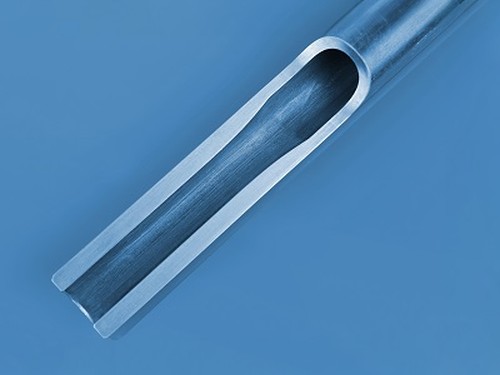
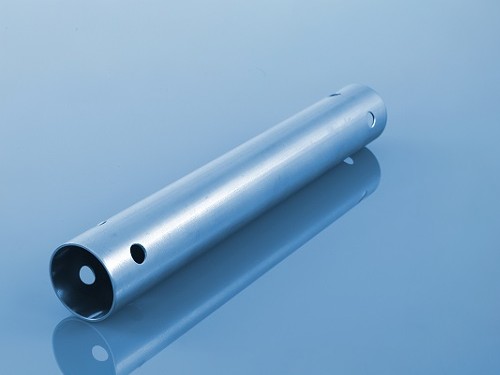
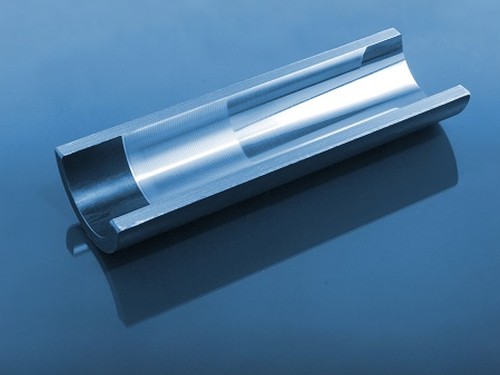
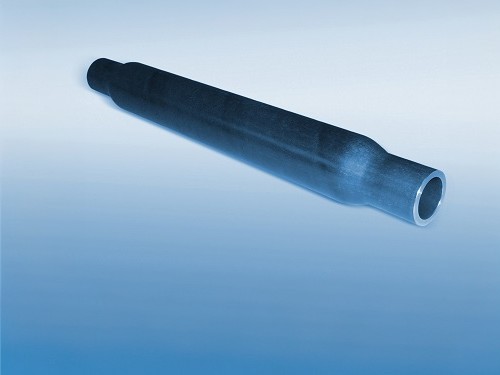

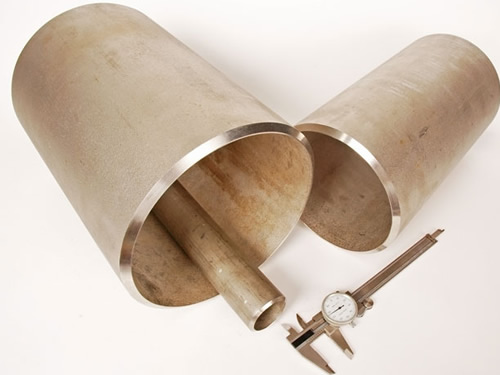
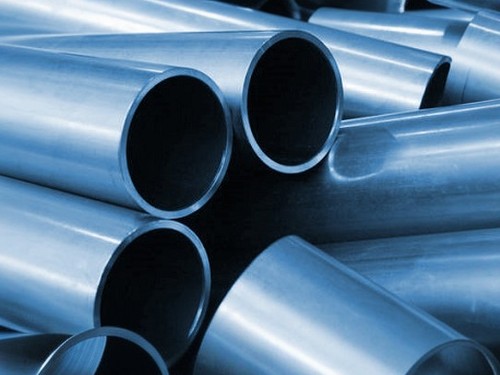
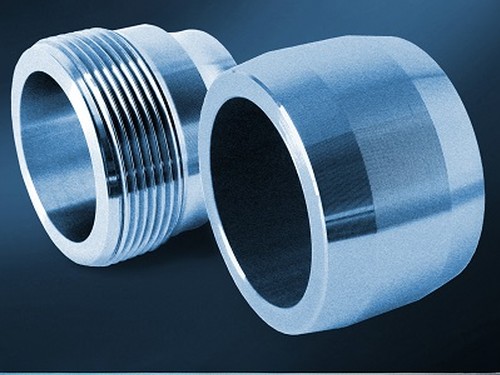
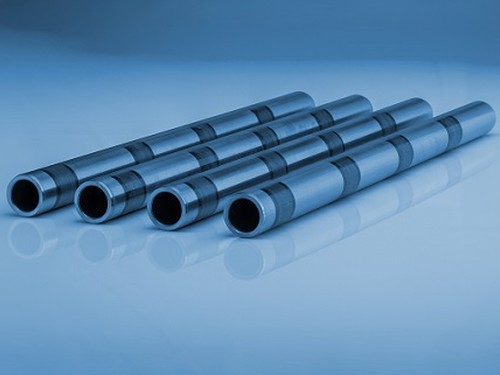
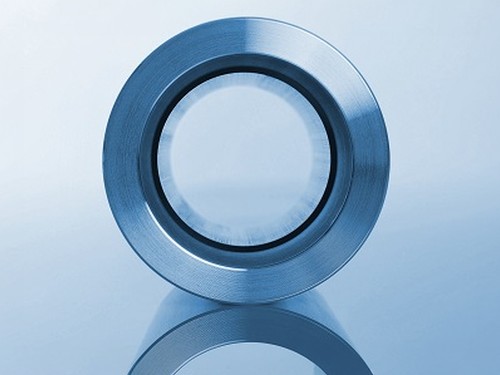
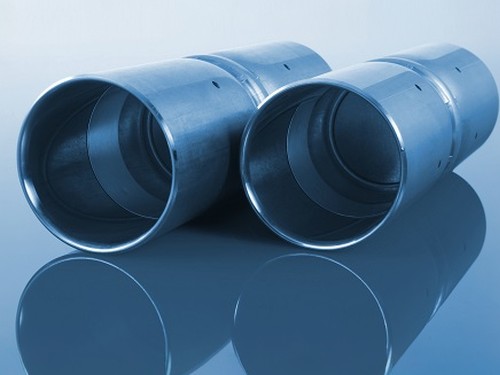


Alloy steel pipes are ideally suitable for chemical, petrochemicals, and other energy-related applications.
The alloy steel pipe adopts high quality carbon steel, alloy structural steel and stainless & heat resisting steel as raw material through hot rolling or cold drawn to be made.
Alloy steel can be used in process area where carbon steel has limitation such as
As an important element of steel products, alloy steel pipe can be divided into seamless steel pipe and welded steel pipe according to the manufacturing technique and tube billet shape.
Here you can see the common alloy steel grade that you will come across.
There are many kinds of materials used for transport in industrial production. Specifically we will have more choices and it is not limited to the use of alloy steel pipe. But even in the face of more choices, many people tend to choose alloy steel pipe. People make their own choices will have their own reasons. This means the alloy steel pipe application has its own advantages. Compared with transmission lines made of other materials, after it meets the basic application requirements, its quantity is lighter. Then in the practical application of alloy steel pipe, it will have more advantages because of this. Besides its physical characteristic advantage, it also has economic advantages. The wide application of alloy steel pipe is with kinds of reasons. So in practical usage, we can exploit the advantages to the full, in this way can we get more profits in these applications of alloy steel pipe.
The transportation of kinds of gases or liquids in production needs to rely on alloy steel pipe. This shows that the actual role of alloy steel pipe application is important. High temperature resistant and low temperature resistant is the tolerance of temperature. In the practical application of alloy steel pipe, there will be many materials need to be transported. However their temperatures are not the same. So this can be the basic requirement to alloy steel pipe. It needs more corrosion resistance. Corrosion resistant material is the best material during transporting, because it is corrosion resistant. So it can be used in more occasions. And it is definitely very convenient for users.
Can be 100% recycled, environmentally friendly, energy-saving, resource conservation, national strategy, national policy to encourage the expansion of the field of application of high-pressure alloy pipe. Of alloy steel pipe total consumption accounted steel in the proportion is only half of the developed countries, to expand the field of use of the alloy steel pipe to provide a wider space for the development of the industry. The future needs of the average annual growth of China’s high-pressure alloy steel pipe long products up to 10-12%.
Alloy Steel pipe contains substantial quantities of elements other than carbon such as nickel, chromium, silicon, manganese, tungsten, molybdenum, vanadium and limited amounts of other commonly accepted elements such as manganese, sulfur, silicon, and phosphorous.
Our team of experienced sales specialists proudly partners with gas and chemical processors, power generation plants, oil refineries, and related industries to offer piping components and value-added services.
The biggest advantages of alloy steel pipe can be 100% recycled, environmentally friendly, energy-saving, resource conservation, national strategy, national policy to encourage the expansion of the field of application of high-pressure alloy pipe. Of alloy tube total consumption accounted steel in the proportion is only half of the developed countries, to expand the field of use of the alloy tube to provide a wider space for the development of the industry. According to the Chinese Special Steel Association alloy pipe Branch Expert Group, the future needs of the average annual growth of China’s high-pressure alloy pipe long products up to 10-12%.
Chemical composition inspection, mechanical properties test(tensile strength,yield strength, elongation, flaring, flattening, bending, hardness, impact test), surface and dimension test,no-destructive test, hydrostatic test.
identification of the chemical composition of the metal used to manufacture the fitting. Uses PMI sensors, including X-ray fluorescence or optical emission spectrometry.
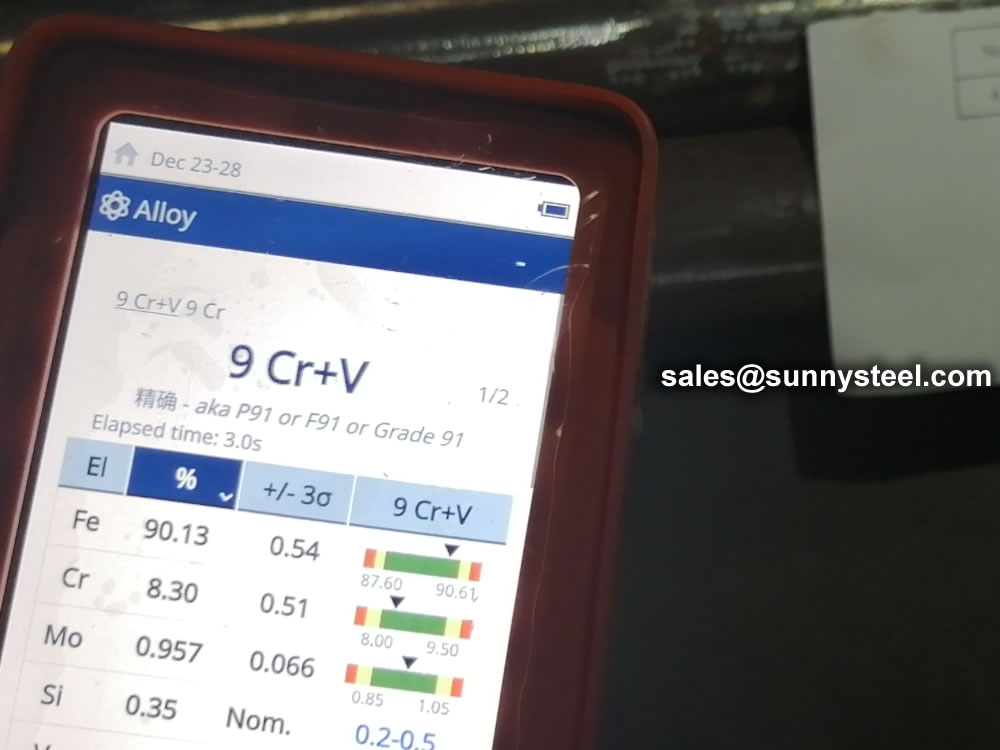
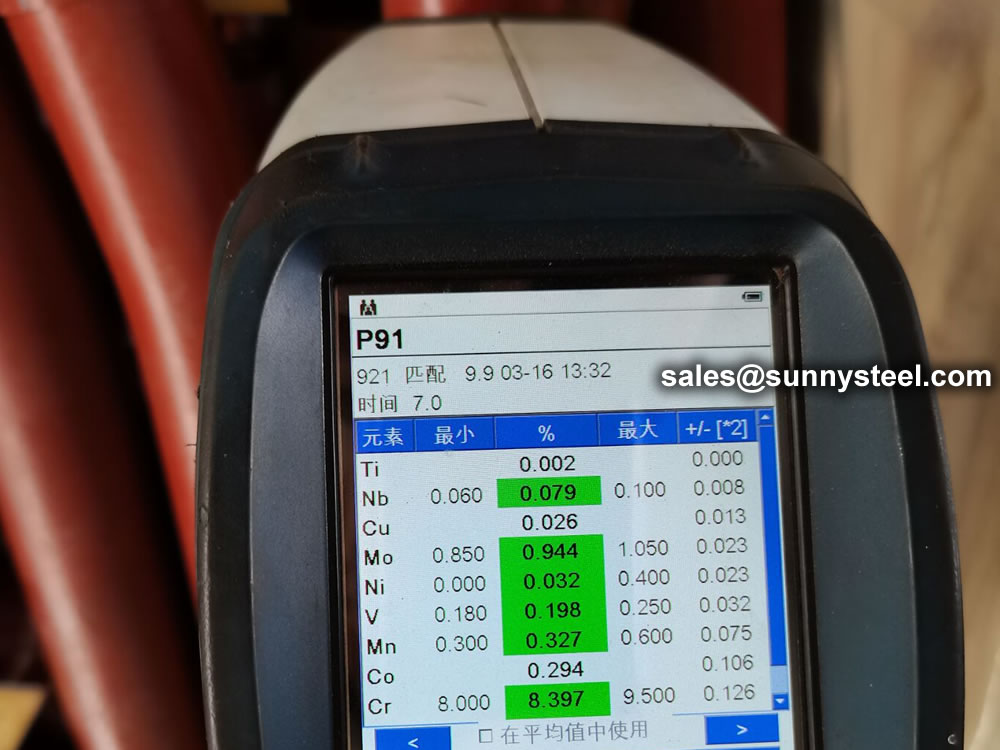
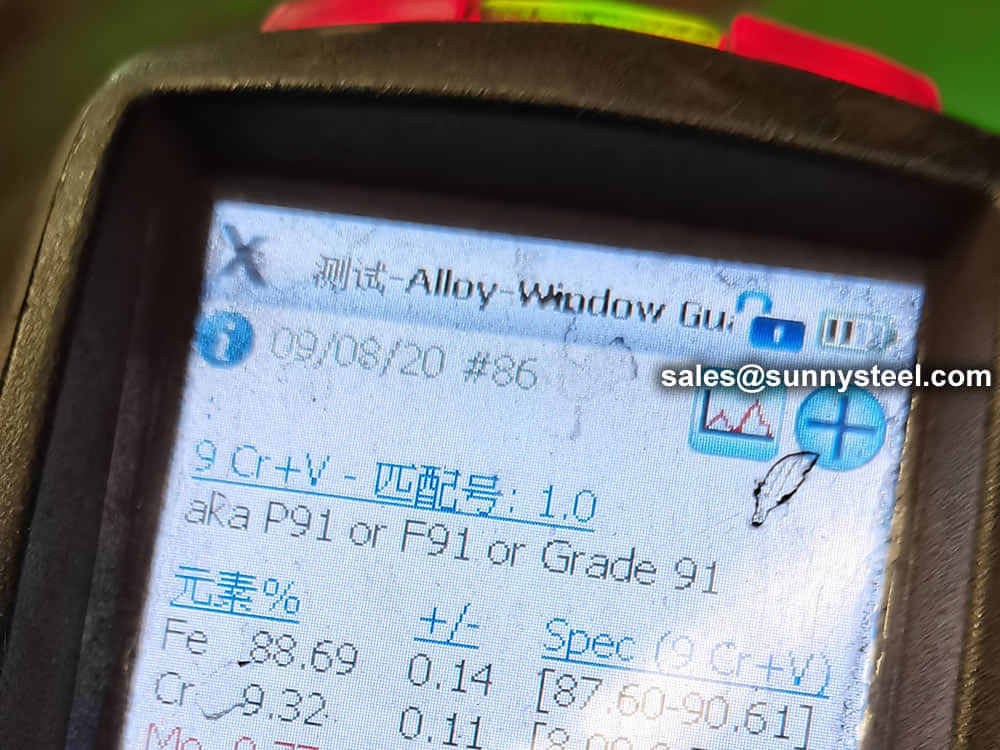
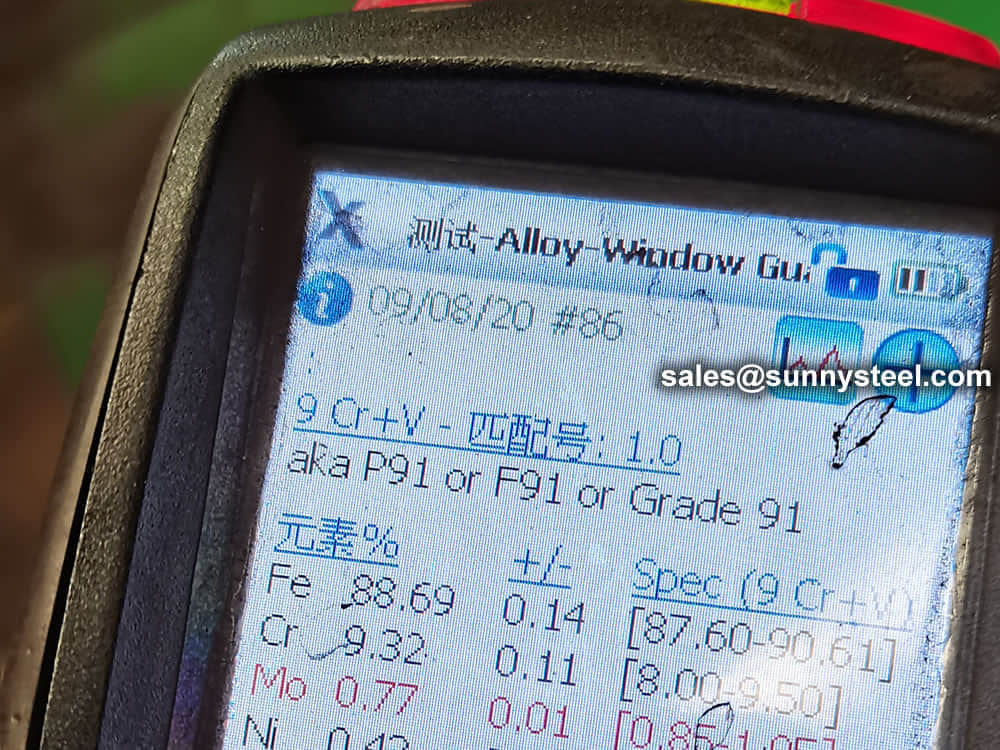
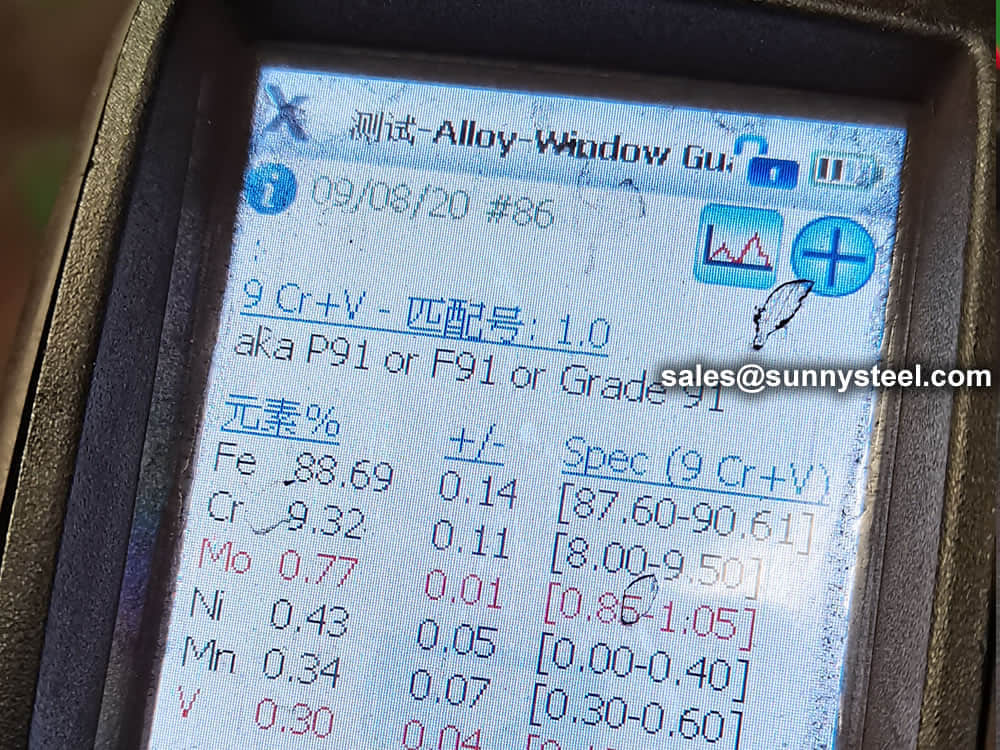

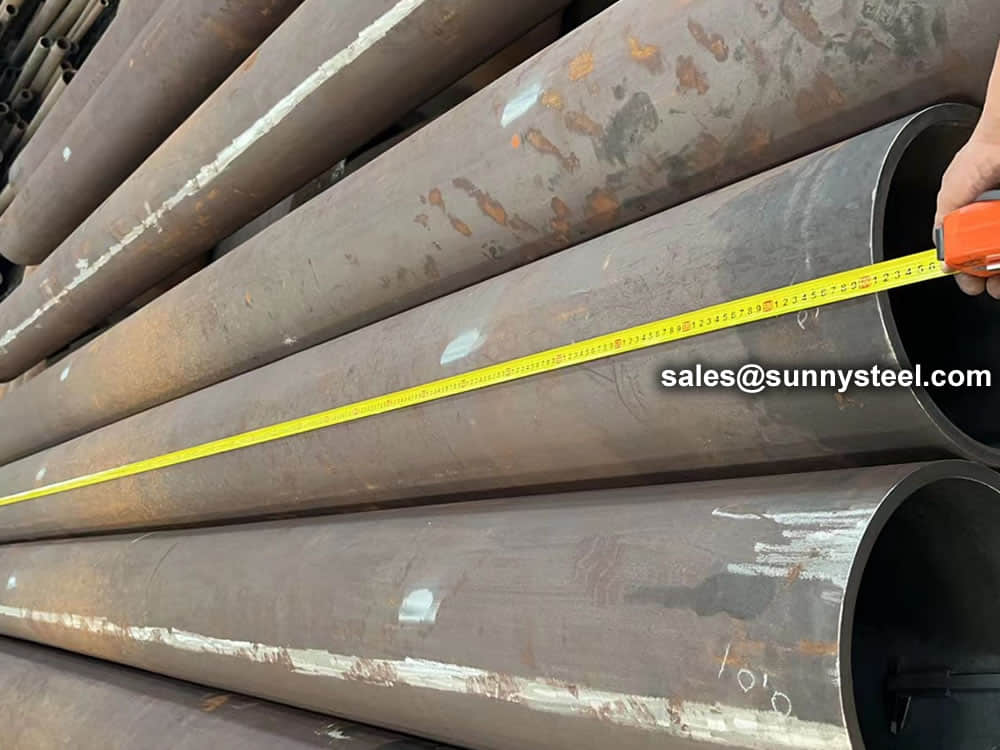
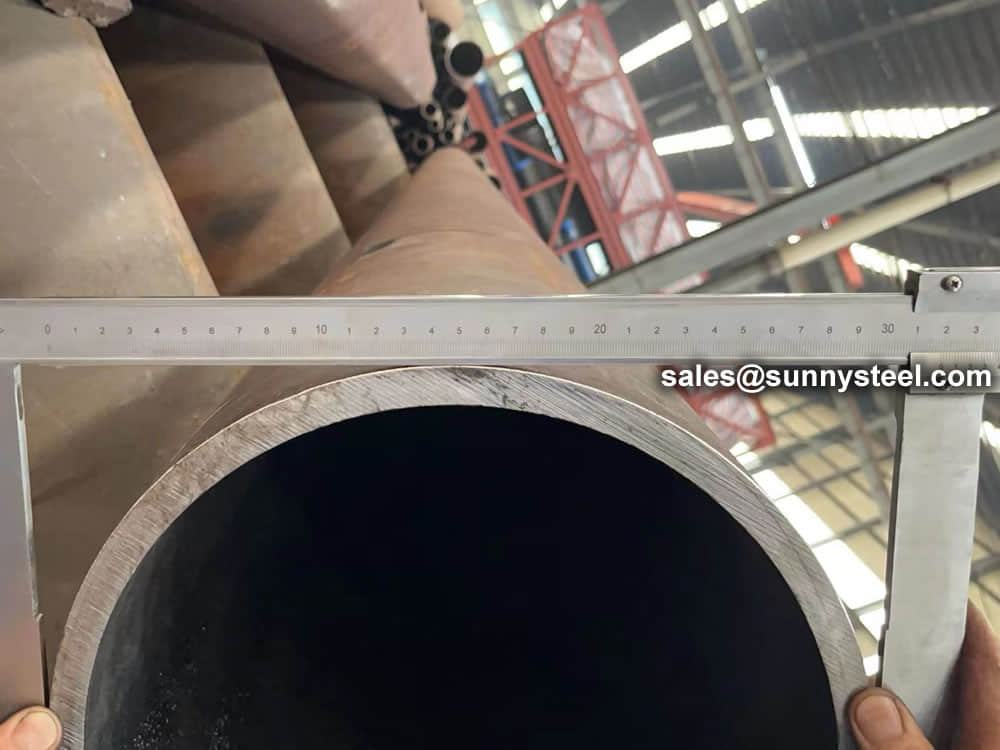
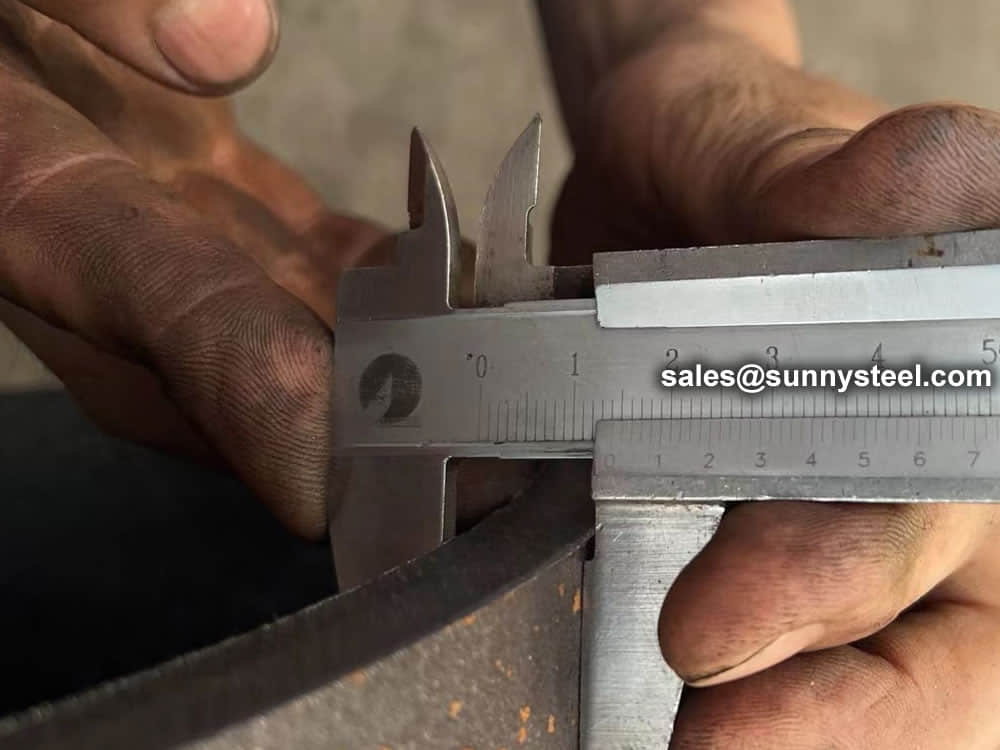
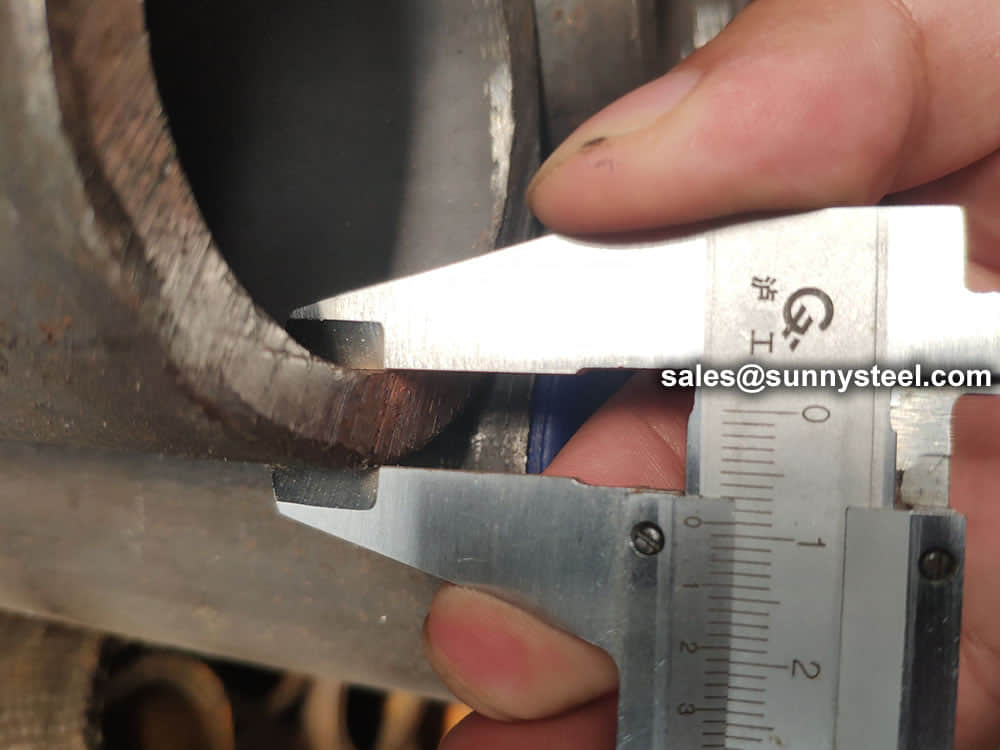
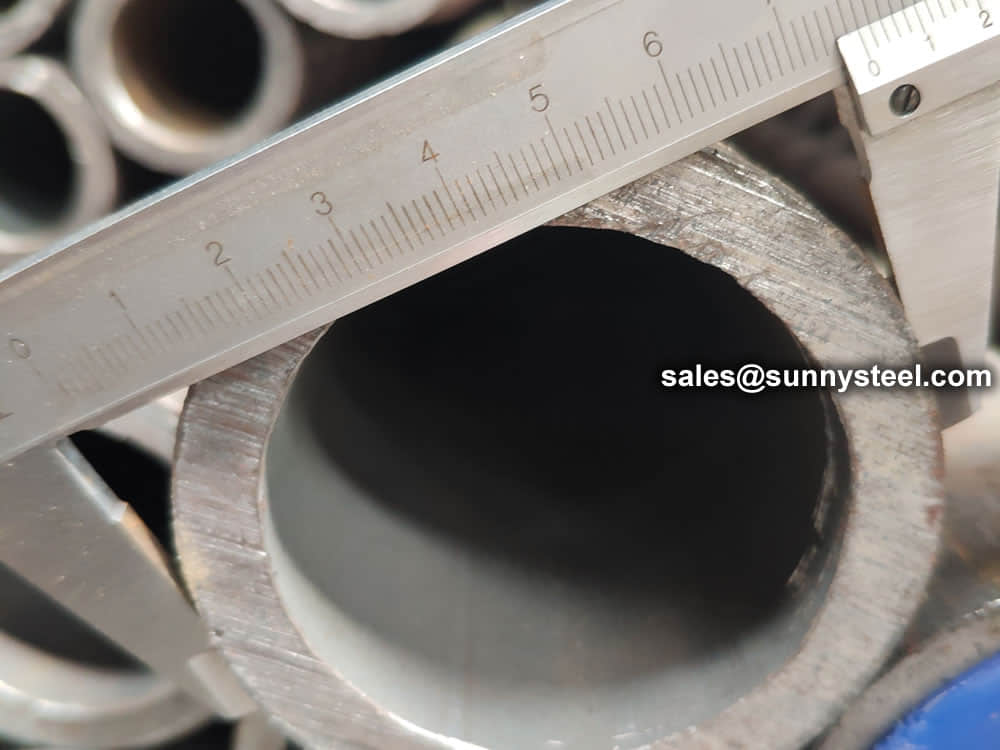
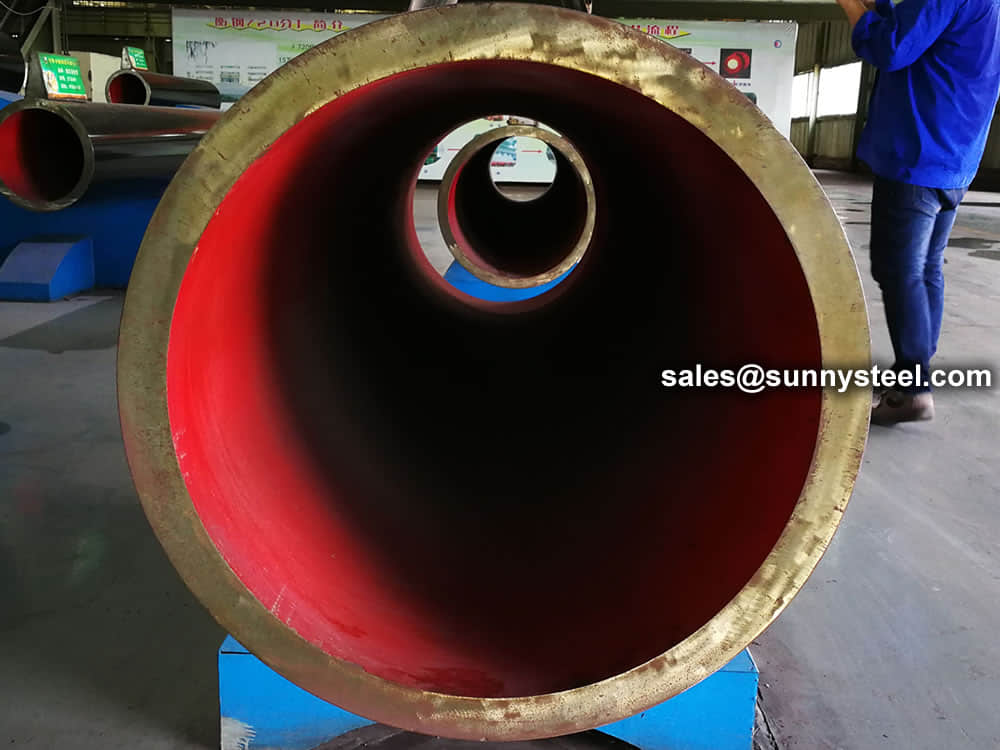
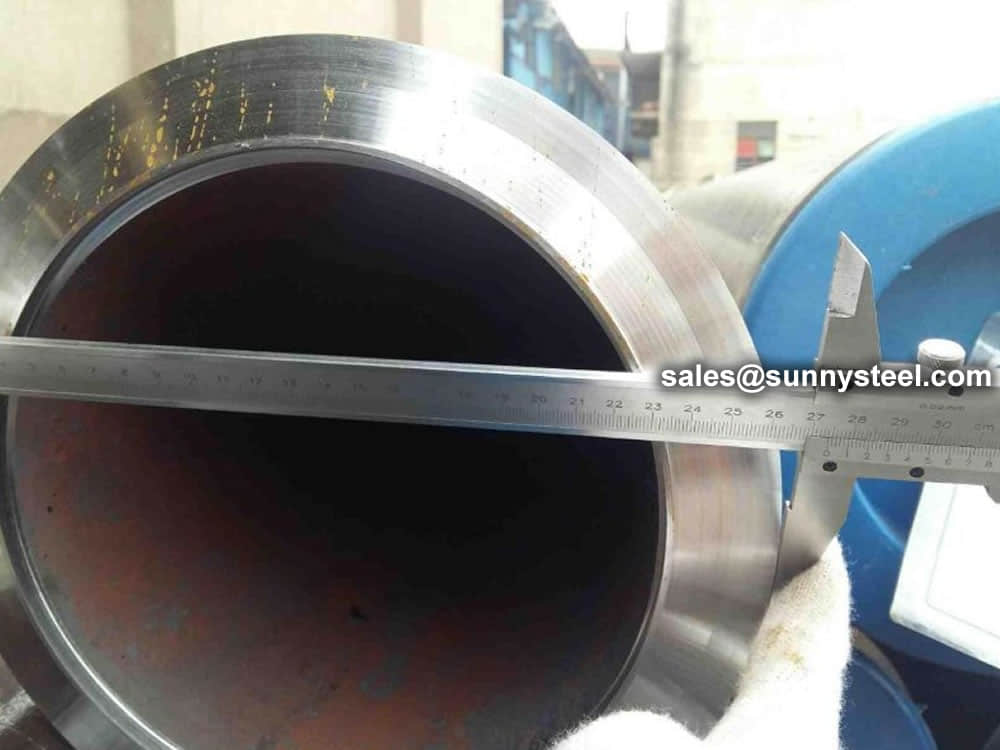
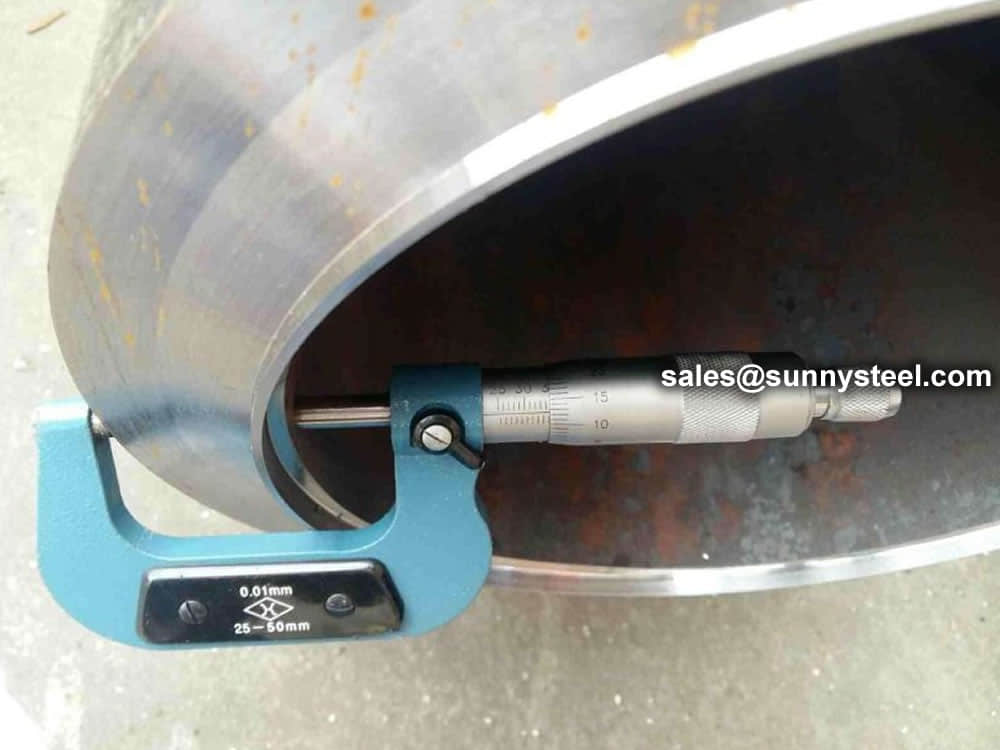
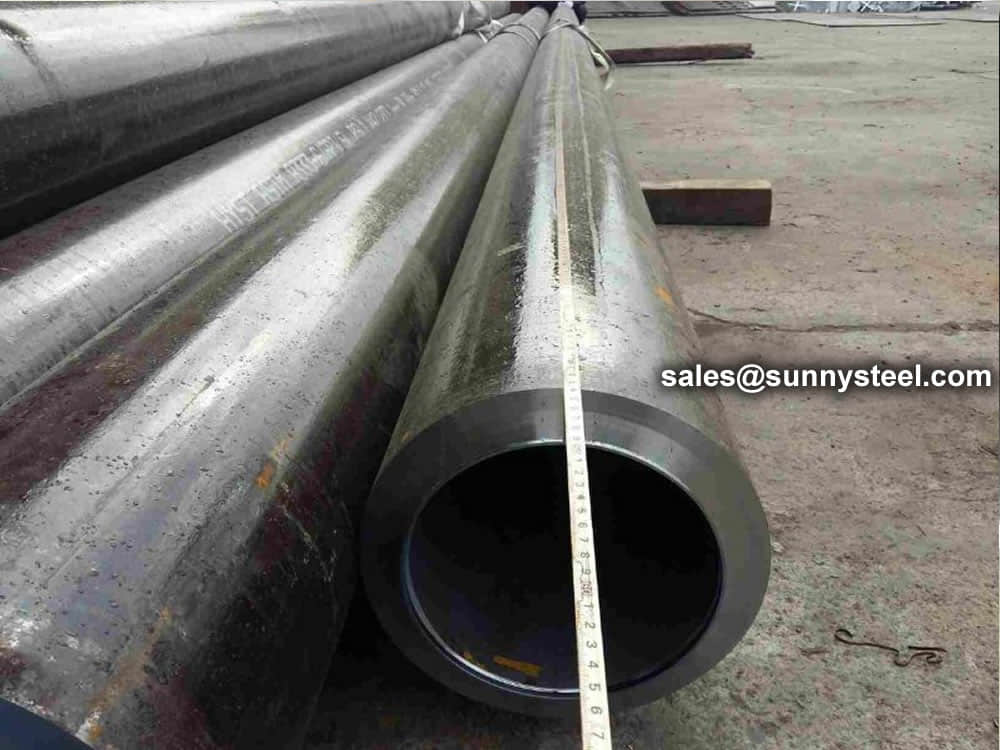
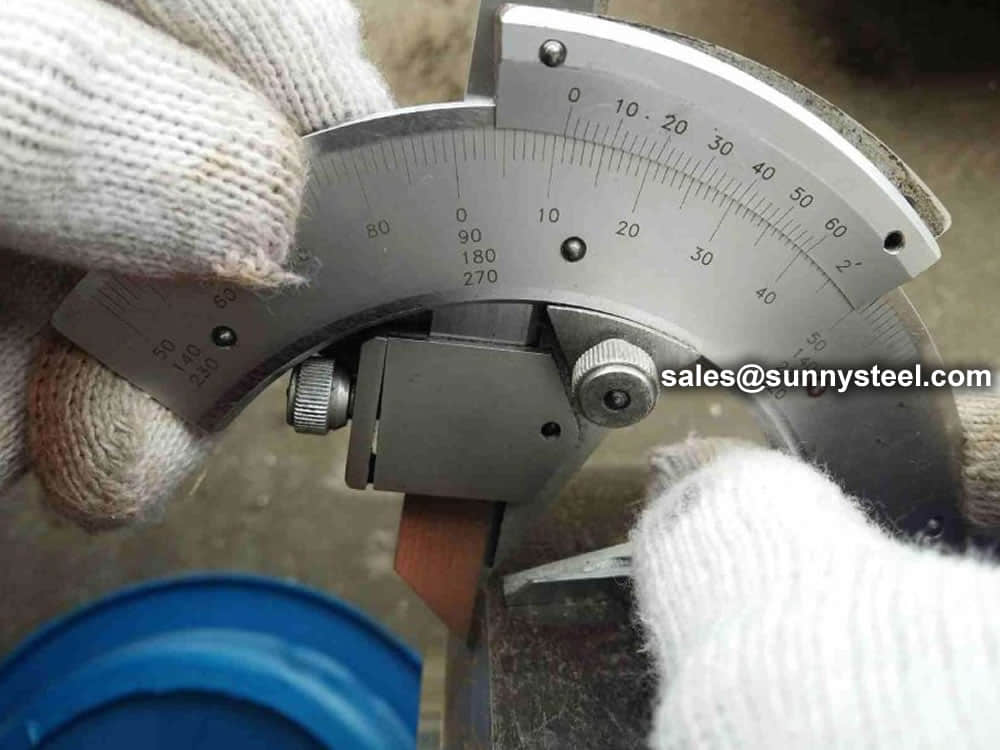
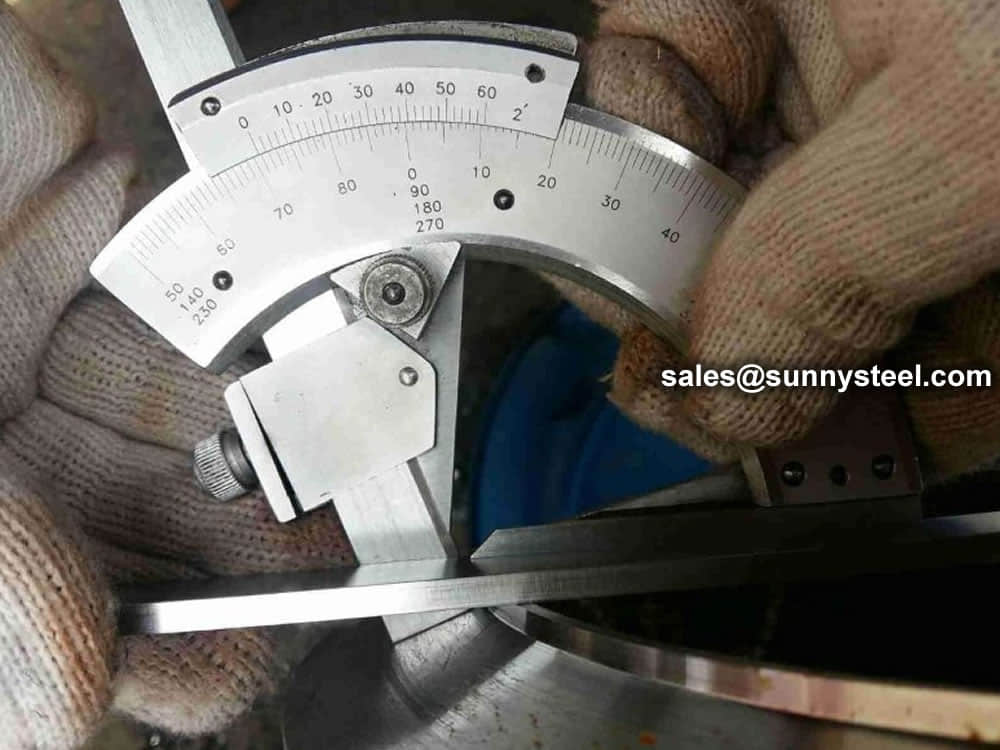
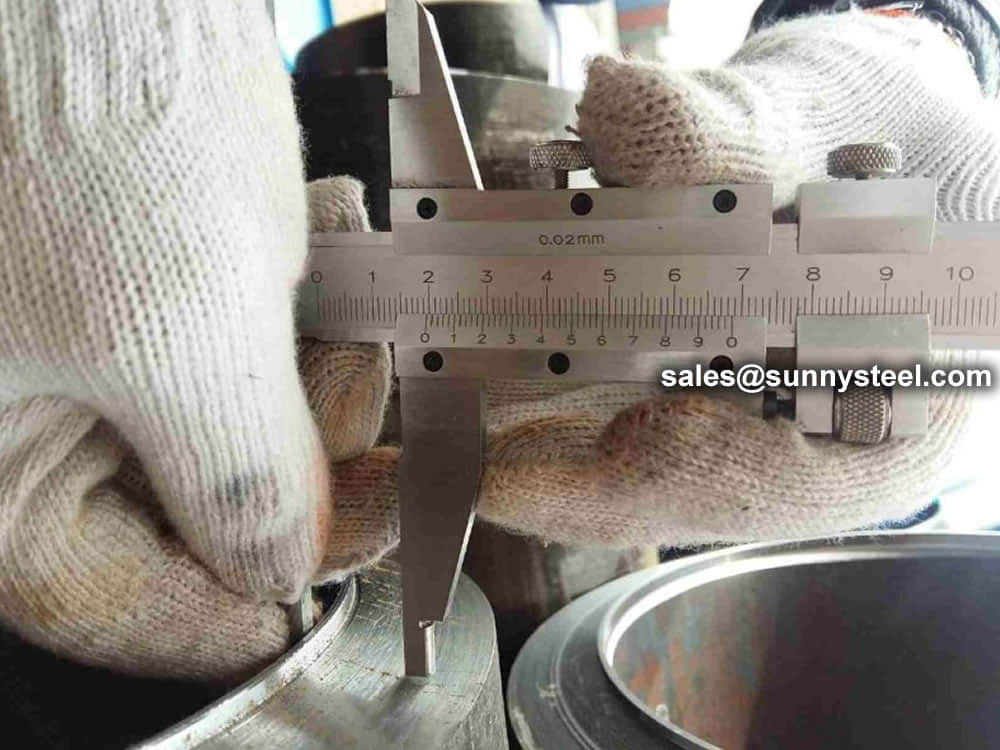
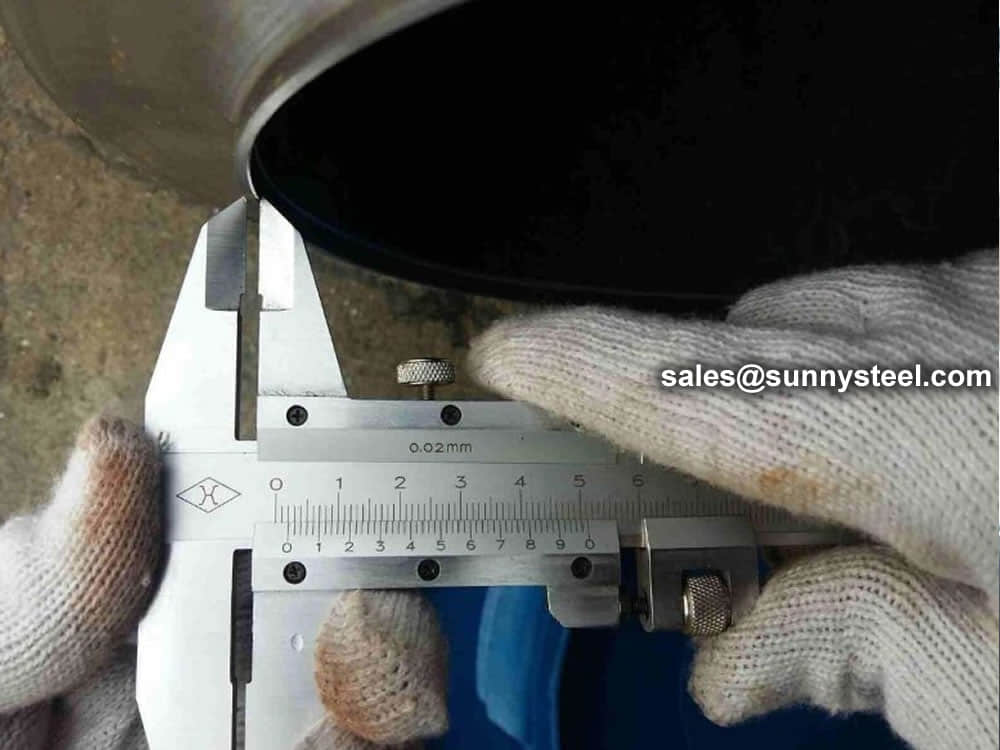
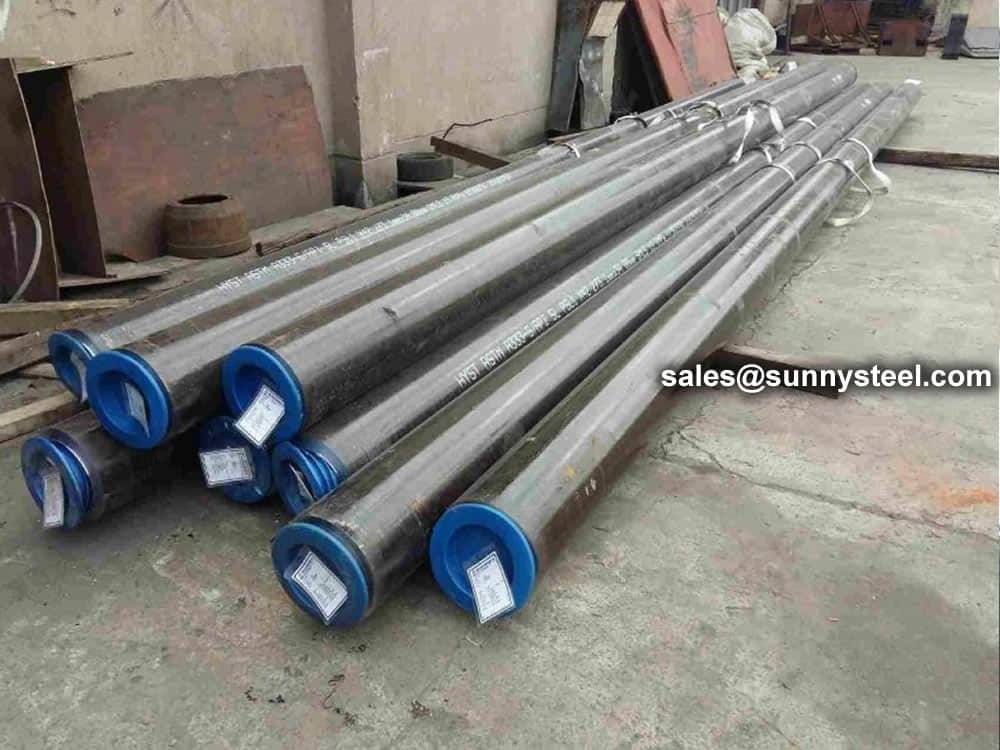
Steel pipe delivery status(condition): cold / hard (BK), cold / soft (BKW), after cold stress relief annealing (BKS), annealing (GBK), normalized (NBK).
| Term | Symbol | Explanation |
|---|---|---|
| Cold-finished/hard (cold-finished as-drawn) | BK | No heat treatment after the last cold-forming process. The tubes therefore have only low deformability. |
| Cold-finished/soft (lightly cold-worked) | BKW | After the last heat treatment there is a light finishing pass (cold drawing) With proper subsequent processing, the tube can be cold-formed (e.g. bent, expanded) within certain limits. |
| Annealed | GBK | After the final cold-forming process the tubes are annealed in a controlled atmosphere or under vacuum. |
| Normalized | NBK | The tubes are annealed above the upper transformation point in a controlled atmosphere or under vacuum. |

The general cold strip mills, volume should go through continuous annealing (CAPL unit) to eliminate cold hardening and rolling stress, or batch annealing reach the mechanical properties of the corresponding standard specifies. Cold rolled steel surface quality, appearance, dimensional accuracy better than hot-rolled plate, and right-rolled thin product thickness is about 0.18mm, so the majority of users favor.
Cold rolled steel coil substrate products deep processing of high value-added products. Such as electro-galvanized, hot dip galvanized, electro-galvanized fingerprint resistant, painted steel roll damping composite steel, PVC laminating steel plates, etc., so that the excellent quality of these products has a beautiful, high resistance to corrosion, has been widely used.
Cold rolled steel coil finishing after annealing, cut the head, tail, trimming, flattening, smooth, heavy volume, or longitudinal clipboard. Cold-rolled products are widely used in automobile manufacturing, household electrical appliances, instruments, switches, buildings, office furniture and other industries. Steel plate strapping package weight of 3 to 5 tons. Flat sub-volume typically 3 to 10 tons / volume. Coil diameter 6m.
Bare packing/bundle packing/crate packing/wooden protection at the both sides of tubes and suitably protected for sea-worthly delivery or as requested.
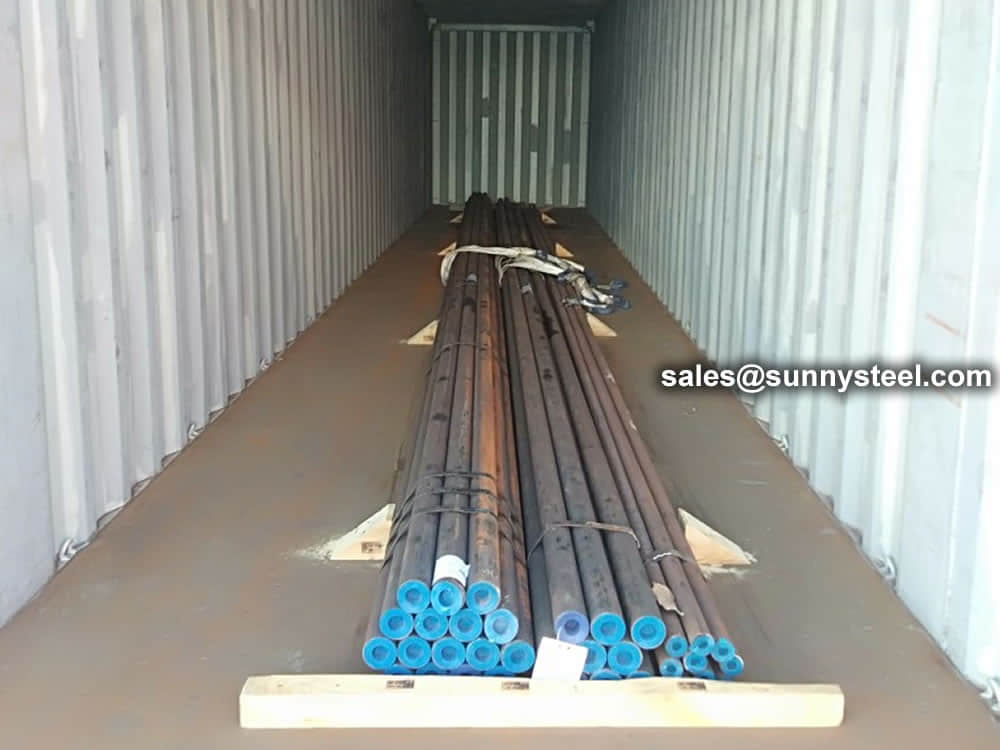
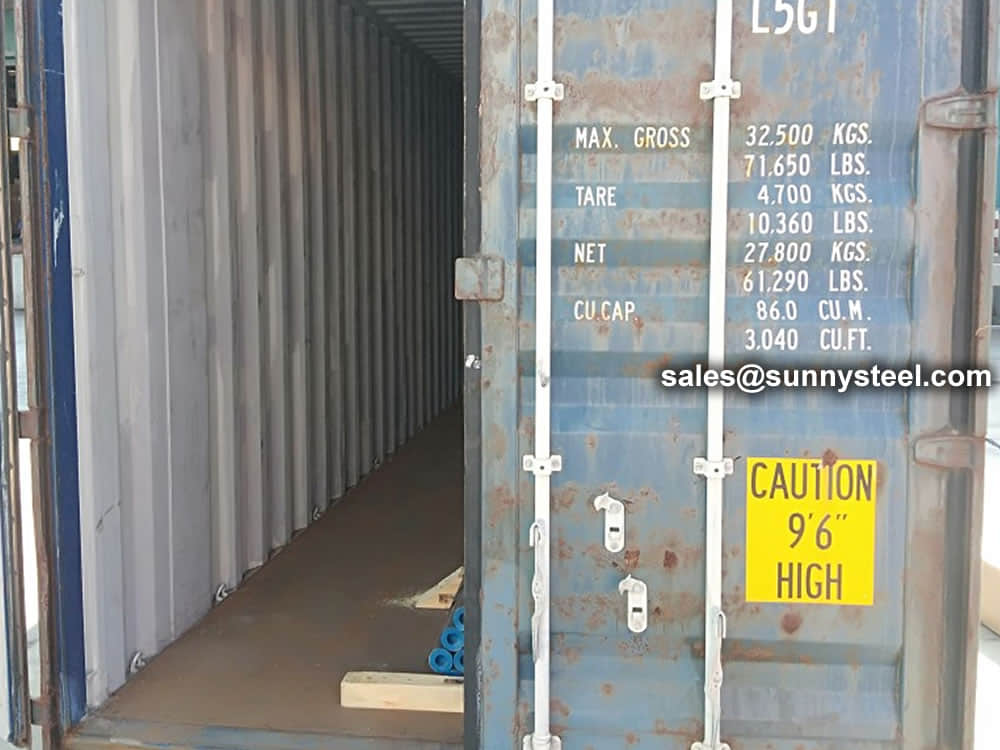
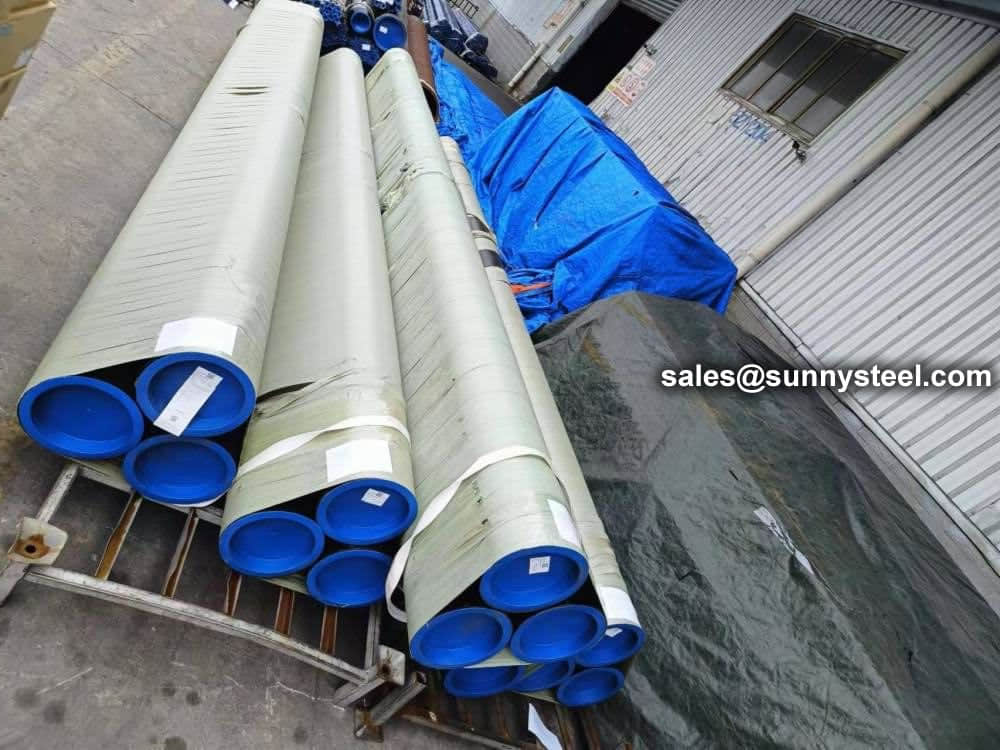









There are probably hundreds of different methods for packing a pipe, and most of them have merit, but there are two principles that are vital for any method to work prevent rusting and Sea transportation security.
Our packing can meet any needs of the customers.
Our team of experienced sales specialists proudly partners with gas and chemical processors, power generation plants, oil refineries, and related industries to offer piping components and value-added services.
Alloy steels are made by combining carbon steel with one or several alloying elements, such as manganese, silicon, nickel, titanium, copper, chromium and aluminum. These metals are added to produce specific properties that are not found in regular carbon steel. The elements are added in varying proportions (or combinations) making the material take on different aspects such as increased hardness, increased corrosion resistance, increased strength, improved formability (ductility); the weldability can also change.
Commonly used alloying elements and their effects are listed in the table given below.
| Alloying Elements | Effect on the Properties |
|---|---|
| Chromium | Increases Resistance to corrosion and oxidation. Increases hardenability and wear resistance. Increases high temperature strength. |
| Nickel | Increases hardenability. Improves toughness. Increases impact strength at low temperatures. |
| Molybdenum | Increases hardenability, high temperature hardness, and wear resistance. Enhances the effects of other alloying elements. Eliminate temper brittleness in steels. Increases high temperature strength. |
| Manganese | Increases hardenability. Combines with sulfur to reduce its adverse effects. |
| Vanadium | Increases hardenability, high temperature hardness, and wear resistance. Improves fatigue resistance. |
| Titanium | Strongest carbide former. Added to stainless steel to prevent precipitation of chromium carbide. |
| Silicon | Removes oxygen in steel making. Improves toughness. Increases hardness ability |
| Boron | Increases hardenability. Produces fine grain size. |
| Aluminum | Forms nitride in nitriding steels. Produces fine grain size in casting. Removes oxygen in steel melting. |
| Cobalt | Increases heat and wear resistance. |
| Tungsten | Increases hardness at elevated temperatures. Refines grain size. |

When you partner with Sunny Steel, you can stop worrying about meeting deadlines thanks to our responsive and timely service. You'll also say goodbye to unnecessary shopping around. Instead, you'll get white glove service from an expert who understands your needs and can get you the materials you need quickly.
